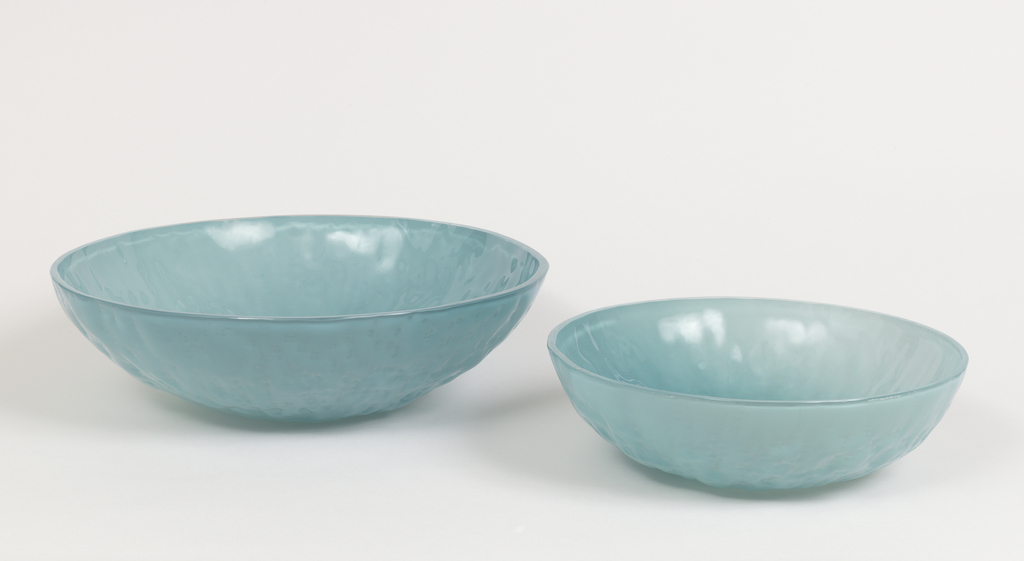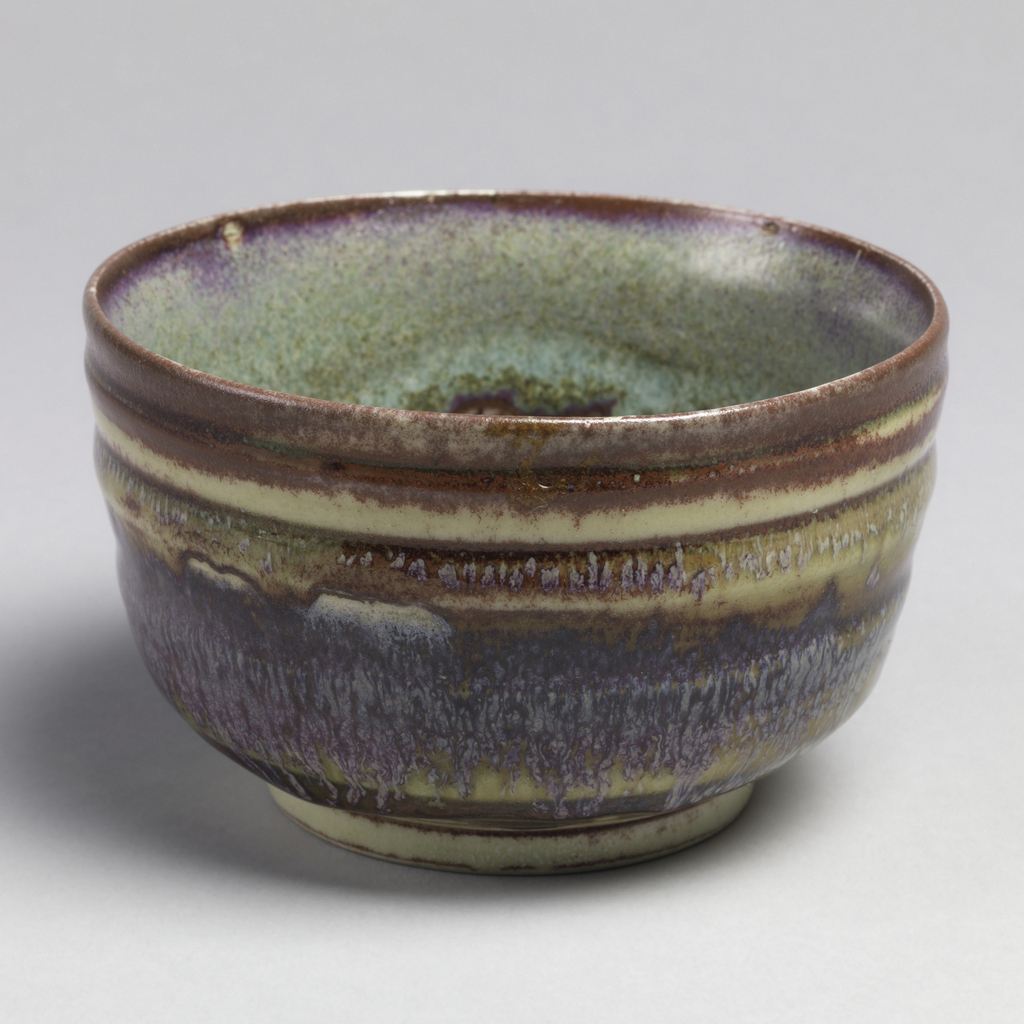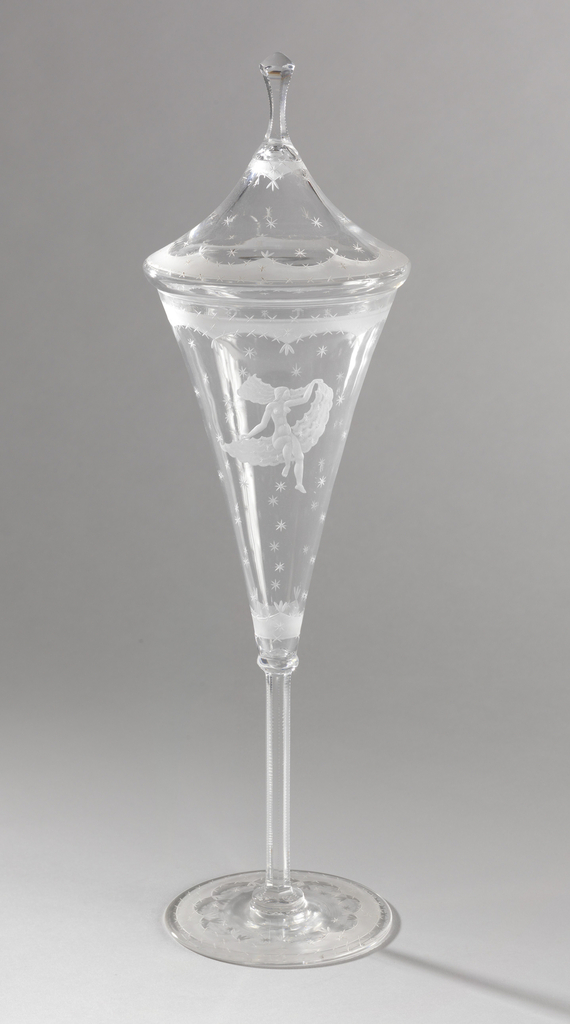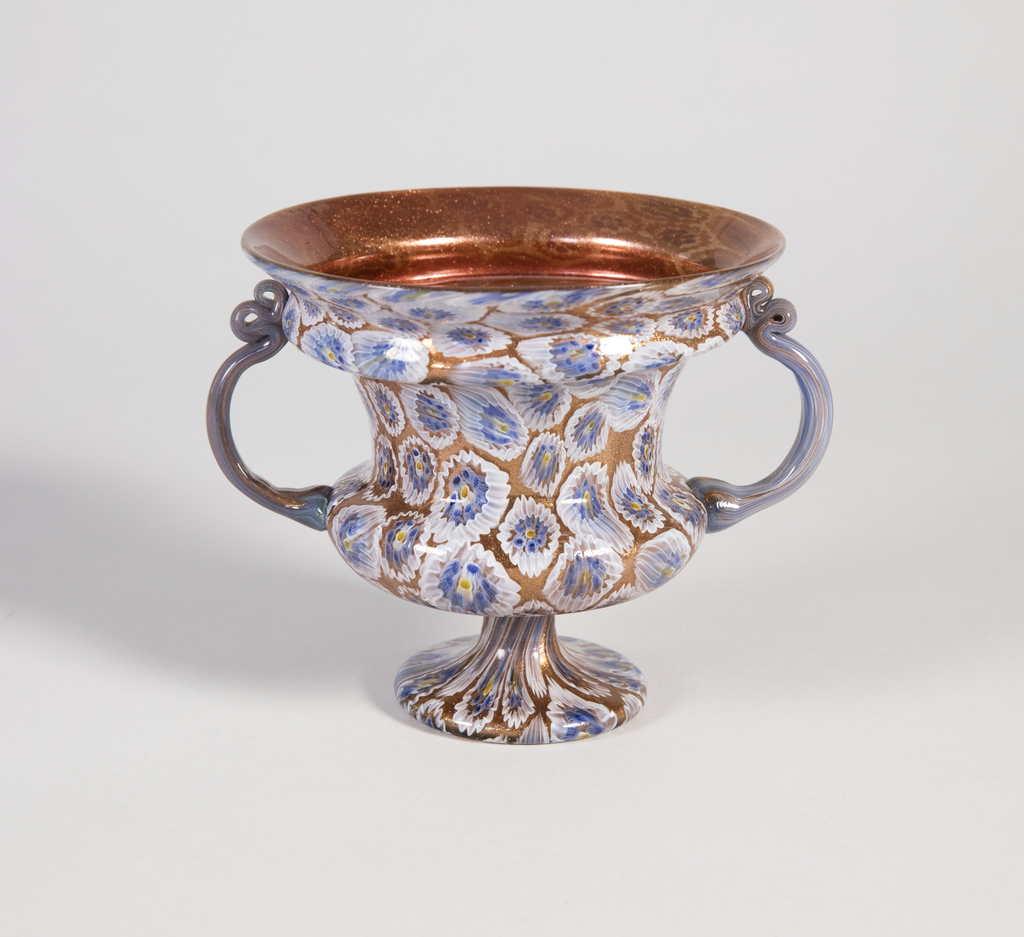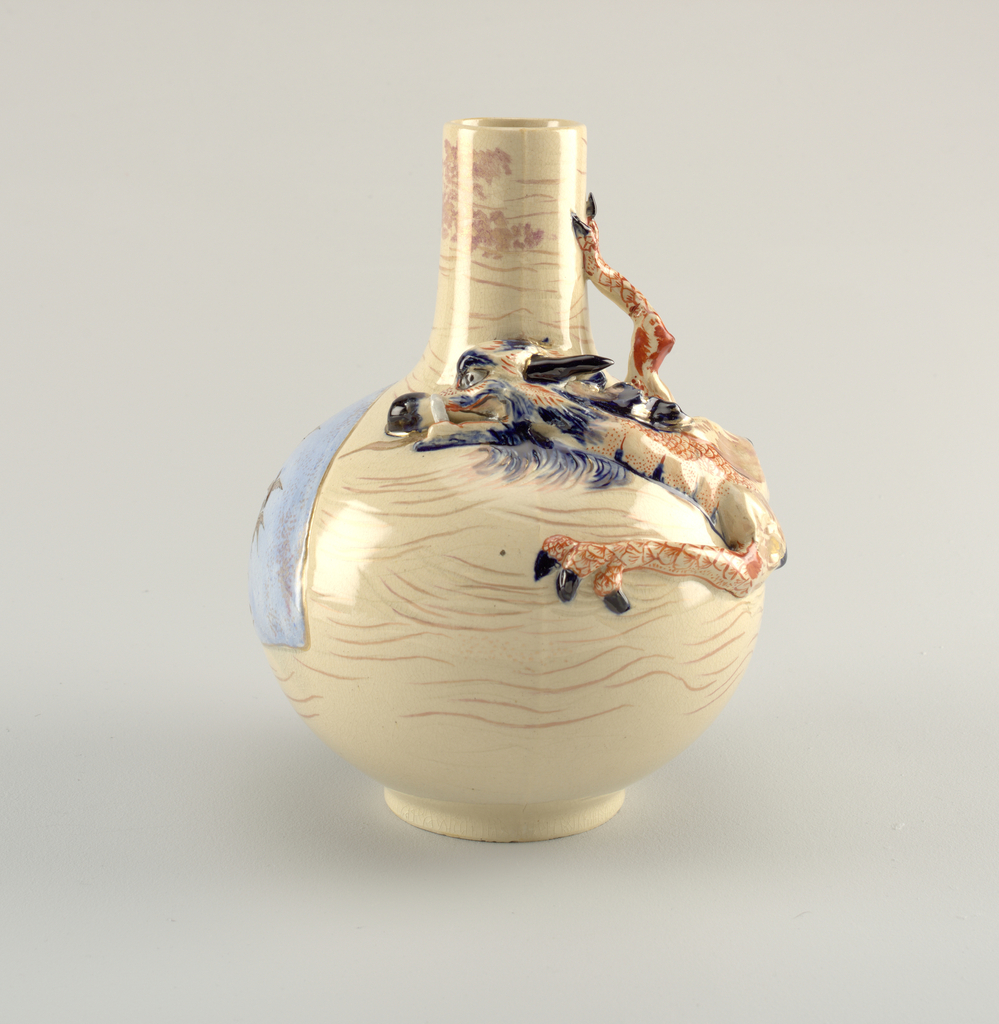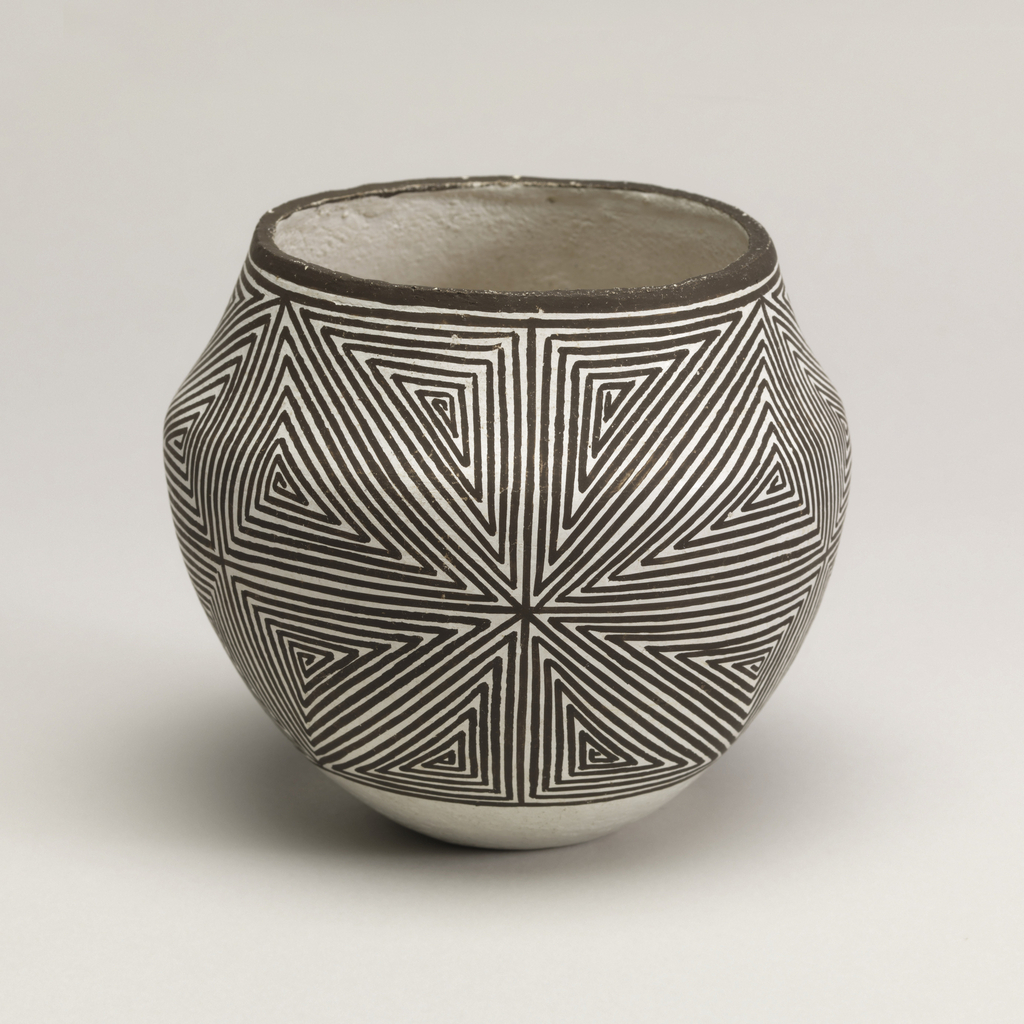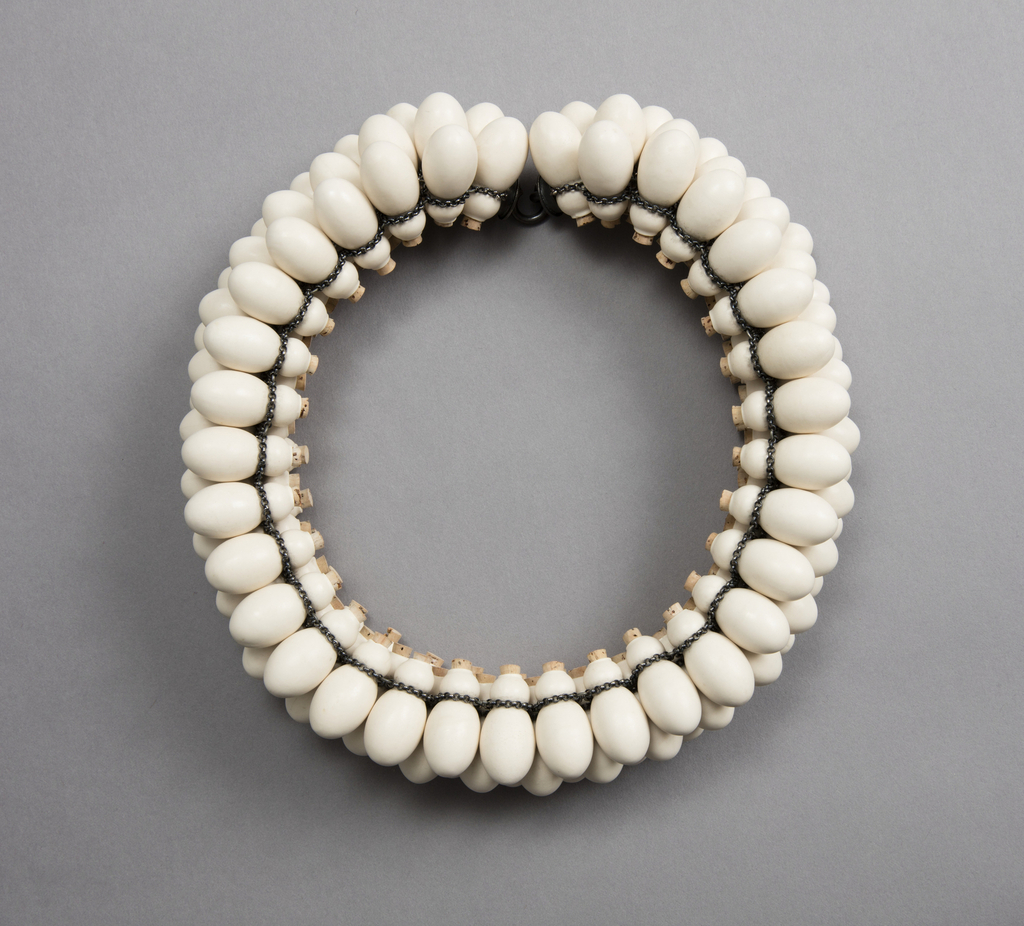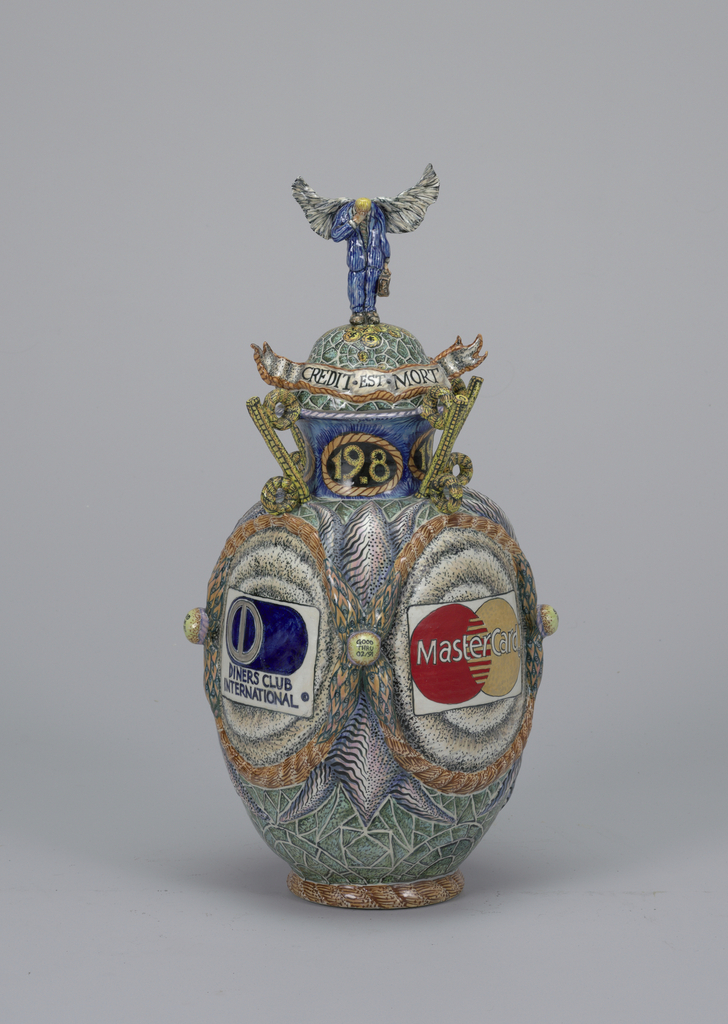Innovative designer, Emilio Godoy, first came to the museum’s attention for his concerns about environmental sustainability, materials, and efficiency in production. His Pablo and Pedro glass project emerged from “the analysis of the energy used in glass manufacturing, in particular, the energy and resources needed for the fabrication of metal molds” used to form glass...
In celebration of Women’s History Month, March Object of the Day posts highlight women designers in the collection. Louisa Etcheverry was born into a family of potters in California in 1911. Her uncle, Fred Meyer, was the founder of Meyer Pottery in Vernon, California, where her father worked and where Etcheverry herself started working in...
This tall glass covered vessel was designed in 1923, by Edward Hald, artistic director of the Orrefors glassworks in Sweden. It features engraved decoration of a female figure seated on a fluttering banner, amid a field of stars bordered by scalloped bands. The delicate star and band motifs are carried through in the vessel’s tapered cover...
This urn-shaped vase represents important historic glass making techniques whose possibilities were expanded during the revival of glass production in late 19th-century Venice. The form features two spectacular variations of glass for the viewer to enjoy and ponder. At first glance, the most eye-catching feature is the inner layer of avventurina (also known as aventurine), the metallic copper-toned...
In celebration of Women’s History Month, March Object of the Day posts highlight women designers in the collection. This dragon vase was made at Frederick Dallas’s Hamilton Road Pottery by Maria Longworth Nichols. Nichols worked there before founding her own firm, Rookwood Pottery, later in 1880. This example is marked with a number “3” on...
In celebration of Women’s History Month, March Object of the Day posts highlight women designers in the collection. Today’s blog post was written by Rebekah Pollock and originally published November 19, 2016. Lucy Martin Lewis learned to make pottery from her great-Aunt and other women living in Sky City, a remote three hundred foot high sandstone...
You might think that this pitcher looks a bit like crushed ice, and perhaps the illusion is intended. This isn’t just any old pitcher, but a champagne pitcher, and it is special because of its so-called “bladder.” Within the body of the vessel, underneath the handle, is a cavity in which ice can be inserted,...
Ceramic beads have been used in jewelry for millennia. Recognizing the utilitarian quality of this material, Peter Hoogeboom chooses it as the primary material for his neckpieces. Hoogeboom had noted historical ceramic jewelry in museums yet did not often see clay used in contemporary jewelry. Through experimentation he found that the slip casting technique allowed him...
This reliquary vase, created by Matt Nolen, is featured in the exhibition, The Virtue in Vice, currently on view at Cooper Hewitt. The vase was selected as a visual interpretation of greed, here defined as the acquisition of large sums of money, universally recognized as the hallmark of avarice. Though tongue-in-cheek, Nolen’s reliquary pointedly illustrates...
